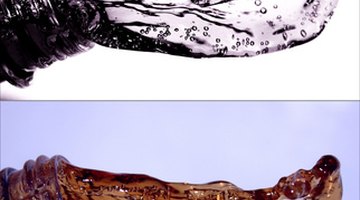How Does Calcium Chloride Remove Water Vapor?
Calcium chloride is a salt produced from the mixture of calcium and chlorine. It has hygroscopic properties, which means that it attracts water molecules. As a result, it can both absorb and remove water from the surrounding environment.

Hygroscopic Properties
As noted above, calcium chloride has hygroscopic properties. This means that it can attract water molecules by both absorption and adsorption. Absorption represents the way in which a fluid is absorbed by another solid or liquid. On the other hand, adsorption represents the process by which a substance physically binds to another surface.
Deliquescence
Calcium chloride is also deliquescent. This means that it can pull in such large amounts of water from the surrounding environment that it actually dissolves in the absorbed water. A key point to understand is that calcium chloride is a liquid brine in its natural state. This is why it absorbs water so readily when it is in its solid state and resultantly gives off energy during this reaction.
Thermodynamically Favorable Reaction
When calcium chloride combines with water, a new product is formed. Additionally there is a release of excess energy or heat. This means that the reaction is exothermic. Exothermic reactions are thermodynamically also more favorable, which can explain the inherent nature of the salt to attract water molecules.
Writer Bio
Asad Mohammad began freelance writing for various websites in 2010, bringing his expertise in medicine and health. His first publication occurred in 2008 when a case report and poster presentation were accepted at Nassau University Medical Center. He graduated from medical school in 2009 and is in residency. He holds a Bachelor of Arts in biology and economics from Binghamton University.
Photo Credits
- water splash - bottle and water in a moment image by Stasys Eidiejus from Fotolia.com
- water splash - bottle and water in a moment image by Stasys Eidiejus from Fotolia.com
More Articles



